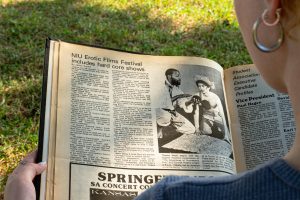Lecture discusses stereotypes in the media
April 9, 1991
It is as wrong to generalize about the media as it is wrong to generalize about people, said an assistant editor of the Chicago Tribune Monday.
Manuel Galvan, speaking as a part of National Hispanic Month, addressed “Stereotypes—How the Media Views Hispanics” to about 50 people in the Holmes Student Center’s Heritage Room.
“It is wrong to lump the media into one monolithic group,” said Galvan, commenting on people who ask “why does the media always …?”
“No two newspapers, radio or TV stations are the same,” he said. But he did point out some similarities in the hiring practices of the media.
They have a poor record for diversity, he said. “Hispanics are not well-represented in the newsrooms and studios,” he said.
Eight percent of the editorial staff of all major daily newspapers is made up of minorities; 3.2 percent of that staff is Hispanic, he said. Twenty-four percent of the U.S. population is considered minority, he said.
Problems begin when non-minorities decide what is important to minorities, he said.
“That disparity is not right. It doesn’t make good business sense,” he said.
While newspapers today are worried about losing readers, there is a growing population the newspapers are ignoring. They are missing stories about foreign entrepreneurs and community organizations because they don’t know about them, he said.
Galvan said he has seen a decrease in “typecasting” while he has worked for the Tribune. For example, stories about Hispanic dropout rates now will be written by education reporters rather than Hispanic reporters.
Also, instead of hiring quotas, the workplace should be a natural reflection of the community, Galvan said.
“The future of getting rid of stereotypes is the burden of all of us,” he said. Readers or listeners who see cartoons, columns or stories they feel portray stereotypes should let the media know, he said.






